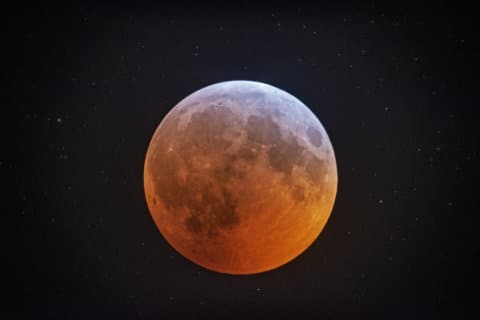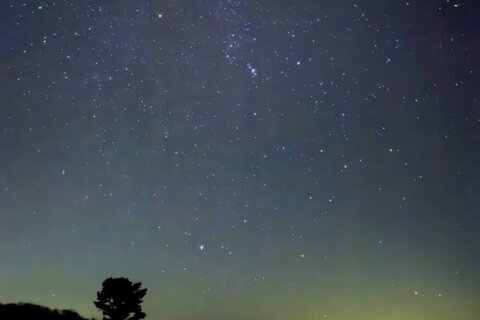Update (1:20 p.m. Oct. 16) — The launch of Orbital ATK’s Antares rocket has been postponed for 24 hours, Orbital ATK announced Sunday afternoon. The postponement was due to a ground support equipment cable that “did not perform as expected during the pre-launch check out,” Orbital ATK said in a mission update posted online Sunday.
—
WASHINGTON — Need a break from earthly realities? I sure do, after the Washington Nationals’ loss and the continuing election. Breathe easier with a look toward the sky: This weekend, check out the supermoon, a rocket launch and news about the universe.
A glorious moon rising after sunset Saturday may appear brighter and larger than other full moons. Just after midnight — around 12:23 a.m. Sunday — the moon will be at full phase, just 19 hours before it reaches perigee, or its closest approach to earth for the month — a supermoon.
The moon will be bright again Sunday night, as it will be very near perigee, which occurs at 7:37 p.m. EDT.
This supermoon is special because it also happens to be the “hunter’s moon” — or the first full moon after the “harvest moon” that occurred last month. With fall in full swing, the light of the full harvest moon gives us a magical view of our familiar daytime world, once away from city lights, and can really illuminate surroundings. I hope you will spend some time outside by the light of the full super hunter’s moon.
The moon will continue to be bright in the east at 8:03 p.m. Sunday, when Orbital ATK’s sixth resupply mission, CRS-5, is scheduled for launch from NASA’s Wallops Flight Facility to the International Space Station. Located on Virginia’s Eastern Shore, CRS-5’s launch and ascent to orbit will be visible to viewers in the D.C., Maryland and Virginia area, and along the U.S. East Coast. Using this map, you can find your location and determine the best time to watch.
This is a return to flight for Orbital ATK’s Antares rocket, which suffered an explosion during the CRS-3 launch from Wallops to ISS on Oct. 28, 2014. The rocket exploded just after liftoff and was completely destroyed, along with the Cygnus spacecraft, carrying supplies and items destined to ISS. There was also damage to the launch facilities, which have been repaired.
Orbital ATK and NASA determined that the launch failure was due to an issue with one of the AJ-26 engines’ turbo pump — there are two engines. Orbital ATK made the decision to switch to RD-181 engines for the Antares rocket, which required design and manufacturing changes. The Antares rocket had to undergo certification tests and successfully conducted a static engine firing in May of this year. This week, the launch window had to be moved back to Sunday because of Hurricane Nicole’s proximity to a ground tracking station in Bermuda. Pre-launch and launch coverage can be viewed live on Saturday and Sunday.
And lastly, this news: The universe in which we live is now determined to be 10 times more crowded with galaxies than previously thought. If you are into astronomical numbers, we went from an observable universe containing 200 billion galaxies to 2 trillion galaxies!
And that is a minimal number, which means there are more to be observed.
The enormity of this number is mind-numbing and will certainly grow when the James Webb Space Telescope, the 30-Meter and 39-meter telescopes come into operation in the coming years. These new telescope giants will be able to see farther back in time and, therefore, see more of the universe and its galaxies. I can hardly wait.
Follow me at Twitter @skyguyinva and my blog at to keep up with the latest news in astronomy and space exploration. You can email me at skyguyinva@gmail.com.







